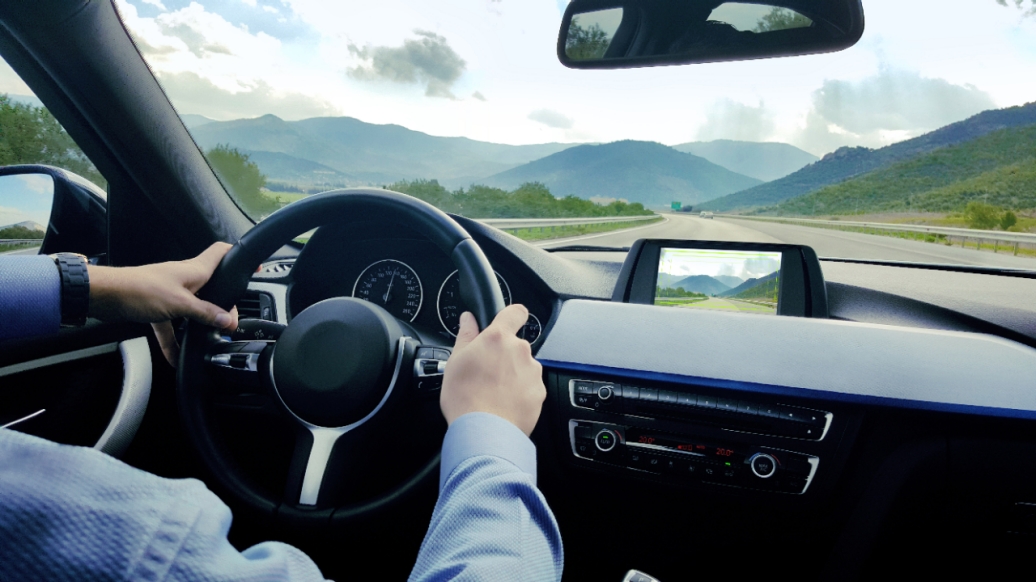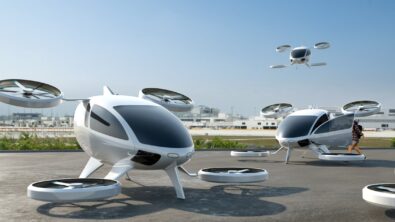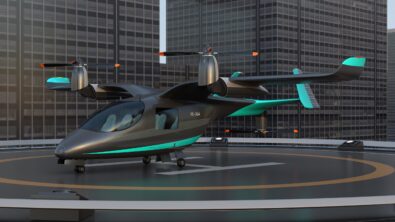Insights on AAM Autonomy from Automotive Part One – Transcript

In this episode, Todd Tuthill is joined by Nand Kochhar to begin their discussion on what aerospace and defense can learn from the automotive industry when designing advanced air mobility vehicles to be autonomous.
Patty Russo: Greetings. You’re listening to Talking Aerospace Today from Siemens Digital Industries Software. Thank you for joining us. I’m Patty Russo, and I manage our global aerospace and defense marketing vertical here at Siemens. In our previous episode, we introduced the key topic of our podcast’s current arc, and that is advanced air mobility or AAM. For those of you who don’t know, I’m sure many of you do, but this new class of aircraft is being developed to transport passengers and cargo across short distances. We also identified some of the main challenges that AAM companies face. We touched briefly on the idea that accelerating digital transformation can help companies overcome these challenges, and one of those challenges is autonomy.
Patty Russo: Some stakeholders in the AAM sector plan to design their vehicles to fly without a human pilot, and as we know, especially anyone in a city like Phoenix and Austin, where there are driverless Ubers, the automotive industry already has experienced successfully making autonomous vehicles and trusting consumers are already using them. So today what we want to explore is what that might look like and how AAM companies in aerospace and defense might apply the insights from the automotive industry to help them get there, so to speak. First, I’d like to welcome back Todd Tuthill, our Vice President of Aerospace and Defense here at Siemens. Welcome once again, Todd.
Todd Tuthill: Thank you, Patty. It’s my favorite day of the week. It’s the day of the week we get to record the podcasts. I’m so looking forward to this.
Patty Russo: Yeah, this one will be fun, and the reason it will be fun is we’ve got a guest. To share expertise and insight on the topic of autonomous cars, we welcome Nand Kochar, Vice President of Automotive and Transportation here at Siemens. Welcome to the podcast, man. Please, can you give us a brief introduction for our audience?
Nand Kochar: Sure, Patty. First of all, thank you for inviting me and really excited about the podcast. And thank you, Todd, for joining this. As you said, I’m the Vice President of Automotive and Transportation Industry. I’ve been with Siemens since 2020, but I’ve spent over 25 years in the automotive industry with Ford Motor Company.
Patty Russo: Well, welcome Nand. This should be a great conversation, and why don’t we just dive right in? I’m going to begin with a question for Todd. Can you give us a quick recap on what AAM is based on what we talked about last time, and the importance of autonomy when it comes to AM?
Todd Tuthill: I talked about this a bit last time. Patty introduced the idea of advanced air mobility. Basically, we’re talking about air taxis. You know, essentially, we call them flying cars, but they’re a little larger than that. So in the previous episode, I talked about four key design considerations that the air taxi industry has to overcome before they can really make things work. I talked about autonomy, range, infrastructure, and certification, and you can, if you missed it, you have my permission. Pause this podcast, go back and listen to the introduction. I won’t go over all those. But basically, we’re going to address each of those four areas in an upcoming podcast, and today’s podcast is about autonomy, and we talk about why is autonomy important in advanced air mobility? Because, you know, you think about most aircraft today or I guess all aircraft today essentially that have people in them, there’s always a pilot.
Todd Tuthill: Why is it so important for advanced air mobility aircraft to be pilotless? And I’m going to introduce a different word that I think we should use because autonomy is a technology and we’re going to unpack it, and in the previous episode I used autonomy as just a general term. We’re going to get specific, but the term I want to use for the aircraft is uncrewed. It’s an aircraft that has passengers in it, but no one controlling the aircraft that sits inside it. So why is an uncrewed aircraft so important? Well, think about this. Imagine what it takes to become a commercial airline pilot. It’s probably 2 years of your life, maybe four years of your life, depending on how you get there. It’s going to cost you more than $100,000 to get there and it requires a minimum of 1500 flight hours before you can get your commercial pilot’s license.
Todd Tuthill: Well, imagine if every single Uber on the road required that kind of level. What would that do to the price of Ubers? If all Uber drivers had to be trained like private pilots have to be trained, we couldn’t afford Ubers. So that’s why autonomy is so important to the financial success of the advanced air mobility industry. So, let’s move from aerospace to automotive, somewhere that’s kind of gone, as Patty said, gone ahead of aerospace, and let’s bring on Nand and have him talk about autonomy in automotive and really define autonomy from the perspective of the automotive.
Nand Kochar: Thank you, Todd. Yeah, I’ll start with that. Obviously, automotive industry has been working on autonomy for a while. For a moment, there was no consistent definition. Thanks to SA International as part of the Motor Vehicle Council, they came up with and standardized on the levels of autonomy. In which you go from a level zero—you can imagine there’s no automation in a vehicle, whether it’s a car or a commercial vehicle—to a level five, which is the highest level of automation. That is a vehicle is being driven without any human intervention. We call it full autonomy. And everything else is in between different states of autonomy. So level zero is no autonomy.
Nand Kochar: Level one, where you are controlling one motion type, let’s say a linear motion, offering features, as an example, breaking as a function. So any one of the motions is controlled is level one, then you continue to build on where you could do multiple levels of control, that you’re doing the steering control as well as the braking functions control. Roughly speaking, you’ll say that it’s in level two, and it builds on from there. To level three is where it’s kind of a mix. Some companies call that totally autonomous from the viewpoint that you don’t need any human interventions. Others will say “Nope.” You still need a warning system when needed. It gives enough warning so that the human driver has to take over. And this is where it starts to get a little murky from the legal aspects of it, of these definitions, as well as the technical definitions.
Nand Kochar: But anyways, different companies commercially sell these at very, very different names and configurations, but reality is level four is the level of autonomy where the vehicles can be driven without any human intervention, however, in cases of emergency or certain conditions, when they can’t be operated, vehicles will come to a stop and a human intervention will be required. And level five is the autonomy where it’s unconstrained that the vehicles can be driven in any environment, whether it’s weather conditions, the lighting conditions, or in any of the terrains. And that is the full level of autonomy, what we call the North Star of autonomy, that vehicles are being driven in all kinds of environments. So with that, I’ll just give it back to you.
Todd Tuthill: Okay, so great definitions Nand. Thank you, and we’ll unpack those. But before we go there, you know, I talked about the fact that aircraft today we don’t have commercial aircraft, at least that I’m aware of, that are uncrewed. But I don’t want to leave people thinking that we don’t have autonomy or autopilots involved in the aircraft industry. And it maybe it would surprise some of you to learn if you think about the last time you were on a commercial aircraft flight. How much of that flight do you think was flown by a computer as opposed to flown by a pilot? And the real answer is that 90 to 95% of most commercial flights today are flown by computers.
Todd Tuthill: They’re flown by autopilots. Pilots get involved, typically in take off. You almost always are flying hands-on at takeoff in a commercial aircraft, and depending on the model and depending on the aircraft, the pilots may or may not use an auto-land function to land, but other than that most of the rest of the flight is directed by an autopilot. It might be an altitude, controlling altitude or air speed or glide slope or descent rates, but some form of autopilots are used almost all the time when pilots are in flight. But I don’t want to give people the impression that the pilots are just sitting there watching Netflix. They’re not. The pilots are there managing the aircraft and managing the systems and their primary purpose is to deal with things when things go wrong, when there are emergency situations.
Todd Tuthill: And it’s a long way, if I look back at that those five levels Nand talked about in terms of, you know, level two for steering level three for advanced driver assist features, I’d say that if I apply those to aircraft, we’re somewhere around level 3 right now in, in aircraft. Somewhere between level two and level three. And I think advanced air mobility really needs to get to about level four and a half, almost to five eventually, before it’s going to become ubiquitous. And that’s really what we want to talk about today. How do we get to level four, level five autonomy in advanced air mobility? So long, long answer to a simple first question, Patty, but that’s where we’re at.
Patty Russo: No worries. That’s the beauty of a podcast. So it’s all good. From there, what I’d like to do is pick up something, Todd, that you said, which is one of the motivating factors in the aerospace and defense industry is the immense training protocols that are required, and time required for pilots. Conversely, not so much the case with the automotive industry and drivers. So Nand, I’m curious if you could share with us. What were some of, and what were and are some of the key drivers, pardon the pun, behind automotive’s R&D when it came to autonomous vehicles? What were some of the catalysts for even looking into the technology and the potential for autonomous in the automotive industry?
Nand Kochar: Sure, there were several factors. We’ll start with what Todd just touched on. Automated driver assist systems, which are already there in today’s cars, have been developed over the years. So the key factor in there was driving safety. So I’ll use an example of adaptive cruise control, automated emergency braking systems. They offer extreme levels of safety from a crash safety perspective with vehicles which have these levels of autonomy built in. And that is important because based on a lot of different statistics, it has been shown a lot of the road accidents have a human error, or the driver error. So [unintelligible] features allow to take care of some of those human errors, work more effectively than others. So that safety has been a big driver.
Nand Kochar: Also I think from a personal experience standpoint of developing technologies and using them, comfort, convenience for long drives. Driver fatigue. So when you have a car steering on its own and applying, braking, and keeping the safe distances on a highway or even in the city in a traffic jam, now you can imagine. What impact does bring it to from a user experience perspective on driver effect and driver fatigue? Of course the ultimate driver in the industry has been what Todd touched on, we want to get to level five or level four in constrained area. I think you touched on that and some of the states within the US like Arizona, some robo taxis type of vehicles have been running, autonomous driving in a given constrained environment on their own.
Nand Kochar: That offers a unique business value, and that’s what our industry has been keeping as a goal as well. So it can change the business models when cars are being driven. And Uber is an example. Imagine today you have Uber, but it still has a driver. Imagine tomorrow when it’s fully autonomous that you don’t have a driver in the equation for full time driving the vehicle. So that’s what I mean by changing the business models of owning a car, driving a car. It has been the big driver for the automotive industry.
Patty Russo: Todd, in terms of safety, I trust that that’s something that’s top of mind and of critical interest in the aerospace and defense industry as well when it comes to autonomous vehicles.
Todd Tuthill: Yeah, absolutely. Safety is a driver for everything we do. It’s not that it’s not in the automotive industry. It certainly is, but there are different aspects of safety in aircraft because if you think about an automobile, I won’t say always, but generally if you’re having problems with your automobile, I can pull off to the side of the road, I can park it and usually that’s a safe thing to do. You don’t have to worry about running out of gas or anything like that. You can park your car and call for help. Well, imagine I’m in an air taxi, and I’m three thousand, four thousand feet above the city and all of a sudden the rotor stopped working or the autopilot stops working or something. What do I do?
Todd Tuthill: I can’t, there’s no way to safely get it to the ground in general terms. You don’t have that luxury in advanced air mobility aircraft. So you’ve got to have more redundancy so those things don’t happen. But beyond that, if things start to break down, you know let’s say, like, for example, you know the miracle on the Hudson when Captain Sully landed the A320 in the Hudson River after both engines were out. If you think about what the autopilot was trying to do on that aircraft, if you’ve ever seen the movie, you know, about that, the computers are screaming at the pilot, you know. “Pull up, pull up, do this, do this.”
Todd Tuthill: The autopilot didn’t understand what was really going on. It was the human in the loop that had to take over for that. So when you think about safety and dealing with all those situations, if we’re going to make aircraft truly autonomous and carry people, we’ve got to make them smart enough to deal with those emergency situations. And that’s one of the big challenges that we’re having in aerospace right now and one of the things we have to overcome before they’ll become truly autonomous.
Patty Russo: Todd and Nand, thank you for a great start to this conversation. Excellent points from both of you, but unfortunately for today we’re out of time. We hope you, our listeners gained new insights about autonomy and how automotive industry experience could apply to the advanced air mobility sector. We invite you to join us for the next episode and more discussion on this really interesting topic. I’m Patty Russo. Thanks once again for tuning into Talking Aerospace Today.
Siemens Digital Industries Software helps organizations of all sizes digitally transform using software, hardware and services from the Siemens Xcelerator business platform. Siemens’ software and the comprehensive digital twin enable companies to optimize their design, engineering and manufacturing processes to turn today’s ideas into the sustainable products of the future. From chips to entire systems, from product to process, across all industries. Siemens Digital Industries Software – Accelerating transformation.


